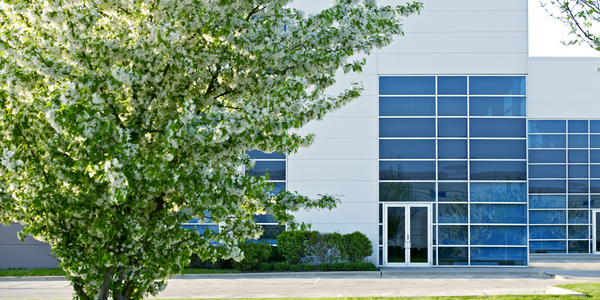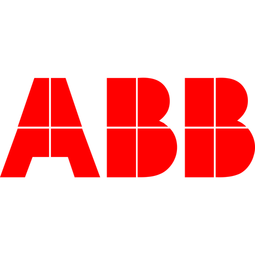
技术
- 自动化与控制 - 分布式控制系统
- 自动化与控制 - 人机界面 (HMI)
- 传感器 - 气体传感器
适用行业
- 水泥
适用功能
- 离散制造
用例
- 过程控制与优化
客户
切蒂纳德水泥
关于客户
Chettinad Cement 作为 Chettinad Group 的一部分,是印度南部的主要水泥供应商。
挑战
Chettinad Cement 认识到可以在其水泥制造过程中实现进一步的效率。它希望投资于综合运营和控制技术,以管理并从其在印度的第二家工厂 Line 2 的资产中获得生产力和能源效率收益。
解决方案
Chettinad 将 Line 2 控制系统升级为 ABB System 800xA,包括最新的人机界面。还采用了驱动器、电机和变送器,以确保安全操作和最佳性能。 ABB 气体分析仪用于监测产品质量和氮氧化物 (NOx)、硫氧化物 (SOx) 和其他气体成分的合规性。 Knowledge Manager 解决方案用于管理生产和质量。
收集的数据
Asset Performance, Device Diagnostic Status, Energy Cost Per Unit, Process Procedure, Production Efficiency
运营影响
数量效益

Case Study missing?
Start adding your own!
Register with your work email and create a new case study profile for your business.
相关案例.

Case Study
Digital Transformation of Atlanta Grout & Tile: An IoT Case Study
Atlanta Grout & Tile, a Tile, Stone & Grout restoration company based in Woodstock, Georgia, was facing challenges with its traditional business model. Despite steady growth over the years, the company was falling behind the web revolution and missing out on the opportunity to tap into a new consumer base. They were using independent software from different vendors for each of their department information and workforce management. This resulted in a lot of manual work on excel and the need to export/import data between different systems. This not only increased overhead costs but also slowed down their response to clients. The company also had to prepare numerous reports manually and lacked access to customer trends for effective business decision-making.

Case Study
Revolutionizing Construction Equipment Rental: A Case Study on ProsRent and ENO8
ProsRent, a startup that won the 'Best Financial Opportunity' and 'Best Pitch' at CodeLaunch 2016, aimed to revolutionize the way construction professionals source and rent heavy equipment. In the construction industry, project managers and contractors typically rent heavy equipment from supply companies. However, predicting inventory can be challenging, and finding the required equipment at the right time and place can be a hassle. If the preferred vendor doesn't have the required equipment, it results in wasted time and money in searching for it, often leading to higher costs due to non-preferred rates and increased delivery costs if the vendor is located far from the job site. Suppliers, on the other hand, desired access to a wider base of trusted renters that they didn't have to vet themselves and wanted to offer dynamic rental pricing based on demand and availability in their market. ProsRent's challenge was to produce a minimum viable product that was fast and first to market but also strong enough to engender loyalty and repeat business from the target market.

Case Study
AI-based Automation for Commercial Office HVAC: A Verdigris Case Study
Modern buildings are required to run longer hours, support a variety of end uses, and contribute to higher levels of economic productivity, leaving a thin margin for error. However, even the most advanced building and environmental control systems have failed to adequately support facilities and operations management. Buildings are often inefficient and the people using them are underserved. To meet occupant comfort and maintain cost and energy efficiency, a dynamic, AI-assisted approach is needed.

Case Study
Revamping EE's Legacy ERP: A Case Study on BT's Strategic Transformation
EE, even after its merger with BT, was operating its ERP estate on legacy infrastructure, hosted on the premises of a third-party supplier. This outdated system resulted in a volume-based operational model, higher time to market, longer delivery cycles, and unsatisfactory customer experience. BT recognized the need for a strategic transformation of these aging ERP systems and sought a partner who could proactively manage application services. The partner was also expected to handle development requirements associated with application management services, drive accountability, and ownership with a time and target-driven transformation of these services. BT's primary goals were to improve customer experience, reduce cycle time, and measure these improvements with precision.

Case Study
Nava Raipur: Building a Greenfield Smart City
The challenge was to construct a world-class greenfield smart city in Nava Raipur, the new capital of Chhattisgarh state in India. The goal was to create an environmentally sustainable city that would meet the needs of its citizens and businesses through optimized solutions. The city was to be designed with high livability in mind, focusing on operational efficiency in civic amenities and planning systems. The city planners aimed to enhance the quality of life of its residents through safe, efficient, and sustainable civic amenities and planning systems. The challenge was not just to build a city, but to build a smart city that would serve as a model for future urban development in India.








